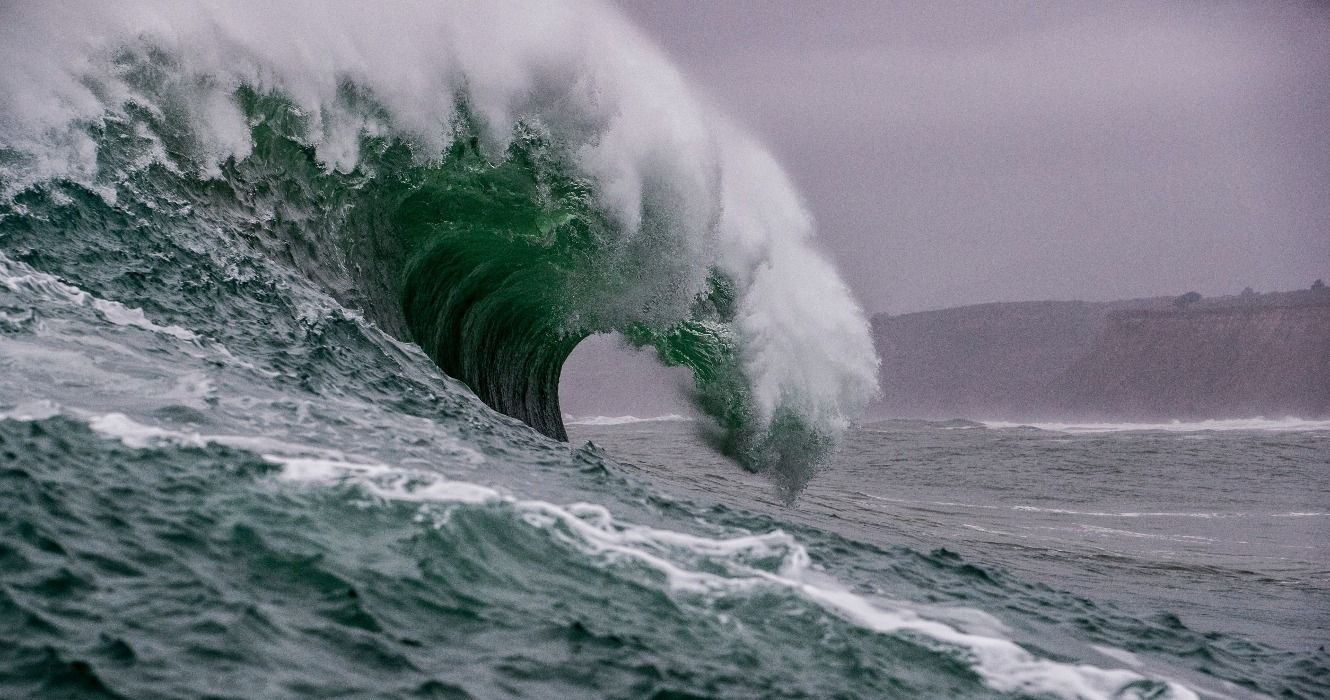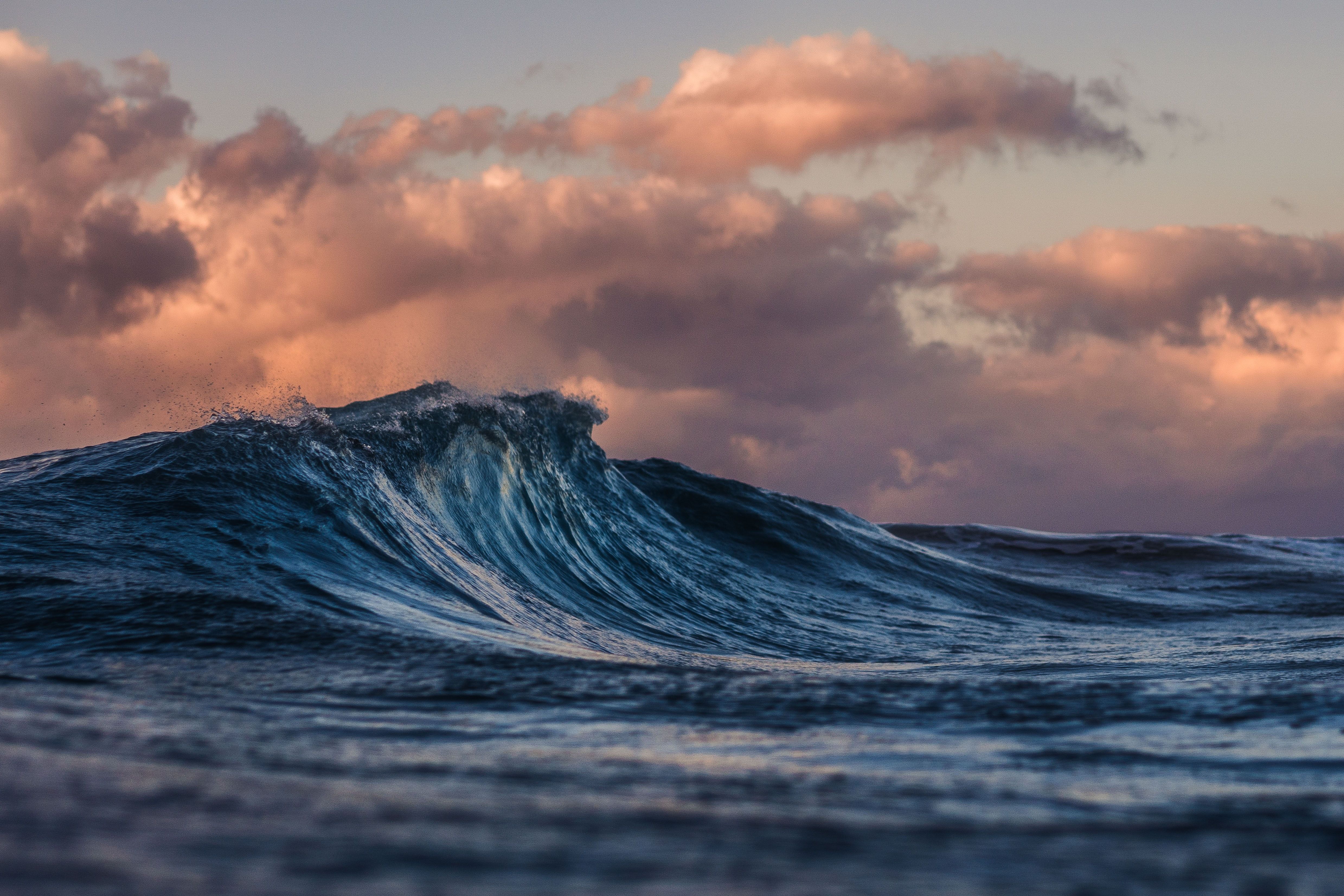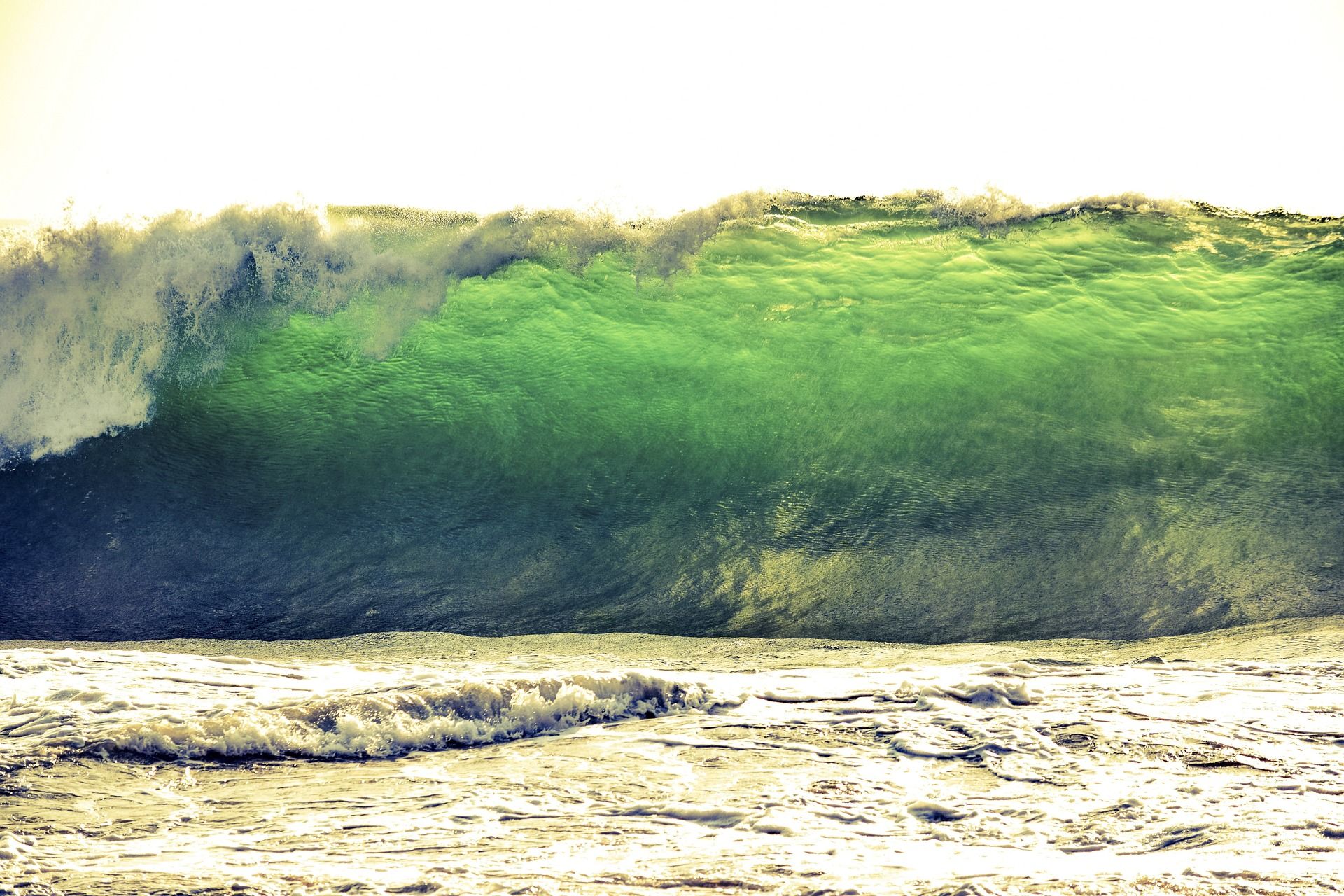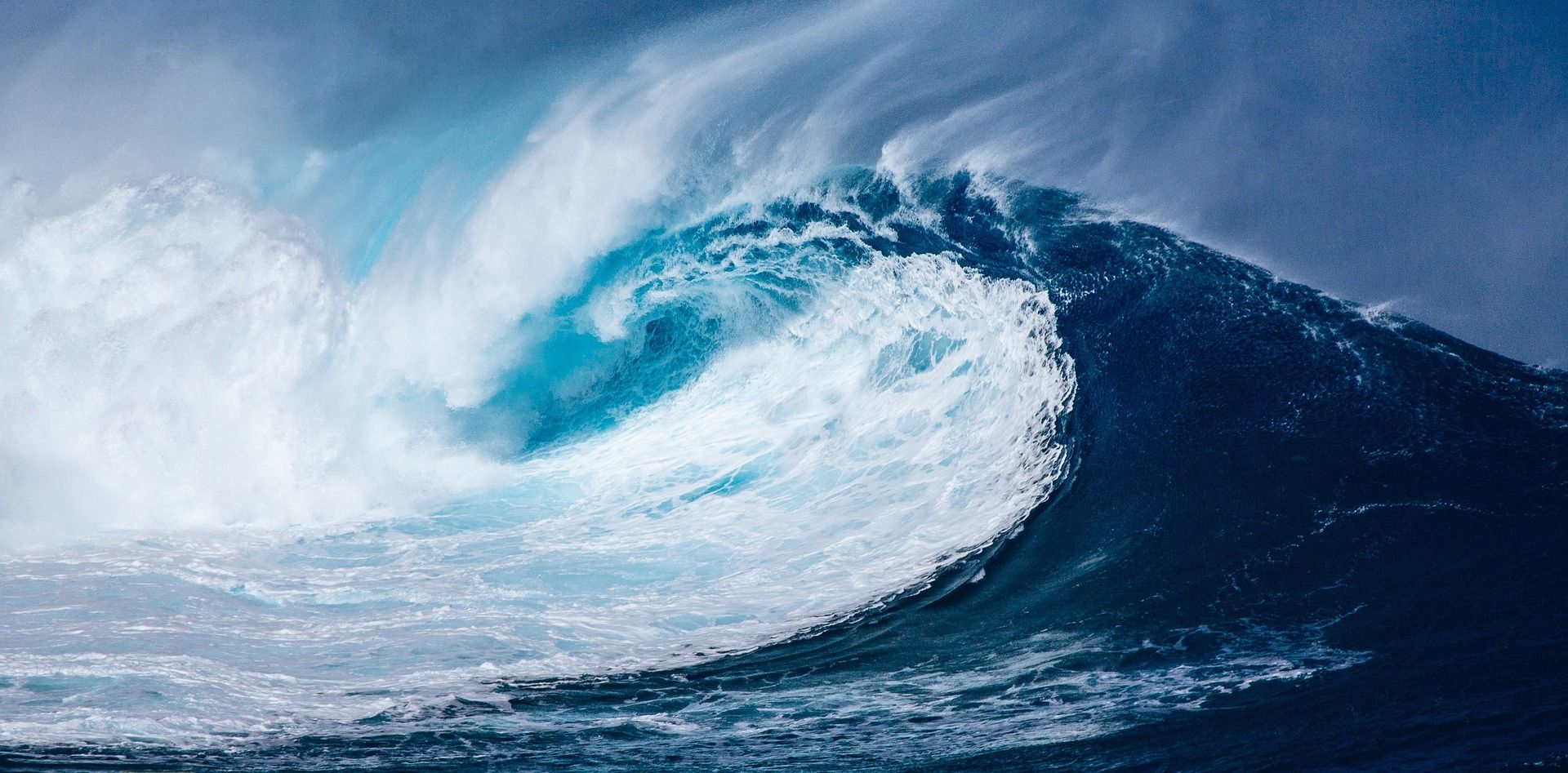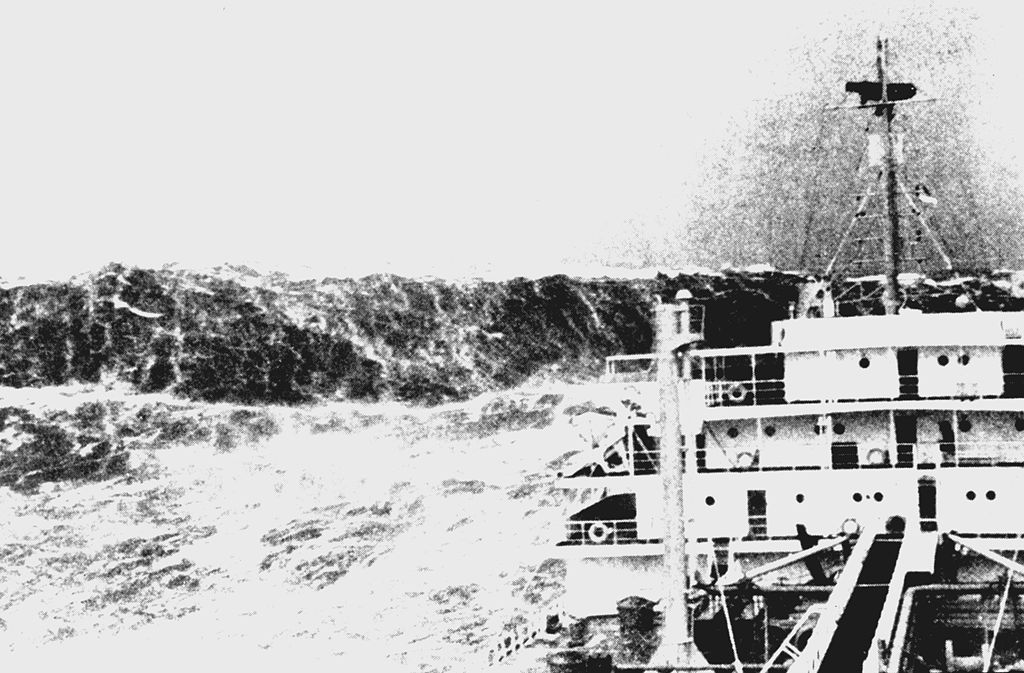Rogues waves, also referred to as "extreme storm waves", "freak waves", or "killer waves", maintained their place among marine folklore for hundreds of years. Although these tremendous titan tsunamis that swallow ships seemingly — and suddenly — have spooked seafarers for centuries, they were officially recorded for the first time in the 1990s.
Even since, a common denominator applies to numerous experts the world over: the study of these sudden swells. Some historians and scientists even attribute the demise of many sunken shipwrecks resting under the surface around the globe to such titanic waves, from the chilly seas of the Northern Hemisphere to the tropical waters of the Bermuda Triangle — where a graveyard of ghostly shipwrecks await.
To date, little is known about rogue waves, which are defined as waves twice as high as the background ocean. Some can even attain heights of over 30 meters — and, in their strongest, most catastrophic form, can sweep people out to sea and even sink an entire ship. Unsunk vessels, though, often don't escape unscathed. That's the case of a fated cruise ship, which, last November, was hit by one such suspected and destructive rogue swell in the sea.
What Happened To The Viking Cruise Ship Hit By A Rogue Wave?
It was the night of November 29, 2022, when the 202-meter (662 feet) cruise ship, the Viking Polaris, sailed through the Drake Passage in Antarctica's Southern Ocean toward Ushuaia port — the latter where many Antarctic cruises begin and end. While not one of the biggest cruise ships in the world, it covers long-haul ventures, catering to global passengers.
The ship, owned by travel company Viking, was on its way from Antarctica to Argentina; however, an abnormally huge wave struck the vessel as it voyaged through the said port, smashing a number of exterior windows, flooding several rooms, and causing internal structural damage.
The power of this kinetic wall of water also shook passengers, sending them flying into the air. Sadly, the event led to the death of a 62-year-old American woman who sustained serious injuries. Four other guests also suffered injuries, although not life-threatening. In the aftermath, Viking expressed its deepest sympathies and launched an investigation into the incident.
Saddening it was — a bucket-list dream trip for the passengers on board that resulted in tragedy — but these gargantuan waves are somewhat rare. Or are they? There are questions to be asked. What are these huge-and-sudden sea swells, and how are they formed? And, perhaps more worryingly, does climate change affect their prevalence?
What Are Rogue Waves?
Rogue waves aren't like the swells that surfers seek at the various beaches where the world's biggest waves break. No, these gigantic watery walls are essentially "freak" waves. To qualify, they're at least twice as high as the surrounding sea; ergo, the average height of the waves for a given area at a given time, as the National Oceanic and Atmospheric Administration (NOAA) explains. It's not solely these swells' size that shivers the spine; it's that they seem to appear out of thin air — and typically without any warning.
How Are Rogue Waves Formed?
How rogue waves are formed remains unknown, but scientists do have some valid explanations based on accrued findings from research over the years. When a storm develops waves in a water current that go against the usual wave direction, the movement shortens the wave frequency. In other words, according to the NOAA, it's thought that these powerful rogue crests are created when smaller waves blend into larger ones. This interaction between smaller and larger waves may occur due to high ocean surface winds or changes in currents — changes typically caused by storms.
At the moment, it's not yet confirmed if the Viking Polaris was indeed hit by a rogue wave due to a lack of data on the wave's height and the state of the surrounding sea. Various news outlets reported that a storm was happening when the suspected rogue wave stuck — a storm being a potentially necessary risk factor for this kind of freakish swell, which is believed to cultivate the required conditions for rogue wave formation.
At the same time, the area where the ship was sailing — Drake Passage — also comes into question. This part of the Southern Ocean is infamously perilous; the mighty Antarctic Circumpolar Current feeds its deep waters, fostering an environment below the surface that leads to big but not rogue waves, scientifically speaking.
What Is The Biggest Rogue Wave Ever Recorded?
The largest rogue wave ever documented was the Draupner wave. Recorded in Norway in 1995, the humongous freak wave reached 25.6 meters (84 feet) in height. It might have been the biggest, but it wasn't the most extreme of its kind ever recorded in terms of size difference between its height and the surrounding sea.
As Live Science reports, the most extreme rogue wave was the Ucluelet in November 2020. At 17.7 meters high (58 feet), it was clocked by an ocean buoy located off the coast of Vancouver Island in British Columbia. To classify as "rogue", a wave must be at least twice as high as the surrounding water — but the Ucluelet was three times higher, whereas the Draupner was only twice as tall compared with the surrounding sea state.
Though ships are obviously most at risk of rogue waves, these biblical-like phenomena can even swallow rescue helicopters as they hover down toward the water. Still, what are the odds of a rogue wave, and seeing as they can and do strike ships, as evidenced in the case of the Viking Polaris, do cruise vacationists need to be concerned?
What Are The Chances Of Getting Hit By A Rogue Wave?
Scientists estimate that only one in 10,000 waves is a rogue wave. ANU theoretical physicist Professor Nail Akhmediev, who has worked on predicting rogue waves via equations, said, "there would be at least 10 of them at any one time in the ocean", as reported by The Sydney Morning Herald.
Furthermore, a 2019 study published in Scientific Reports that utilized data from the US coast suggests that rogue waves might become less frequent but more extreme due to climate change. In the most significant rogue wave study undertaken to date, experts examined two decades of readings from buoys along the western seaboard of America. The buoys' findings indicated that from 1994 to 2016, the prevalence of rogue waves decreased; however, they did increase in height.
Although the report's results suggest these waves may become less common but more extreme, the team of scientists said the study's findings could be geographically specific to the region of the ocean they studied. More data on a global scale is required to expand on the study.
Since experts expect climate change to influence rogue waves as the future unfolds, it's of little surprise they hope to learn more about these freaks of mother nature — to discover how and when they may appear. They're a growing threat to the worldwide shipping industry — yet also cruise ship tourism, it would seem. As many luxe cruise ships will sail in 2023 and beyond, the looming issue of rogue waves, albeit rare occurrence to some degree, has scientists', travel operators', and cruise enthusiasts' attention.

